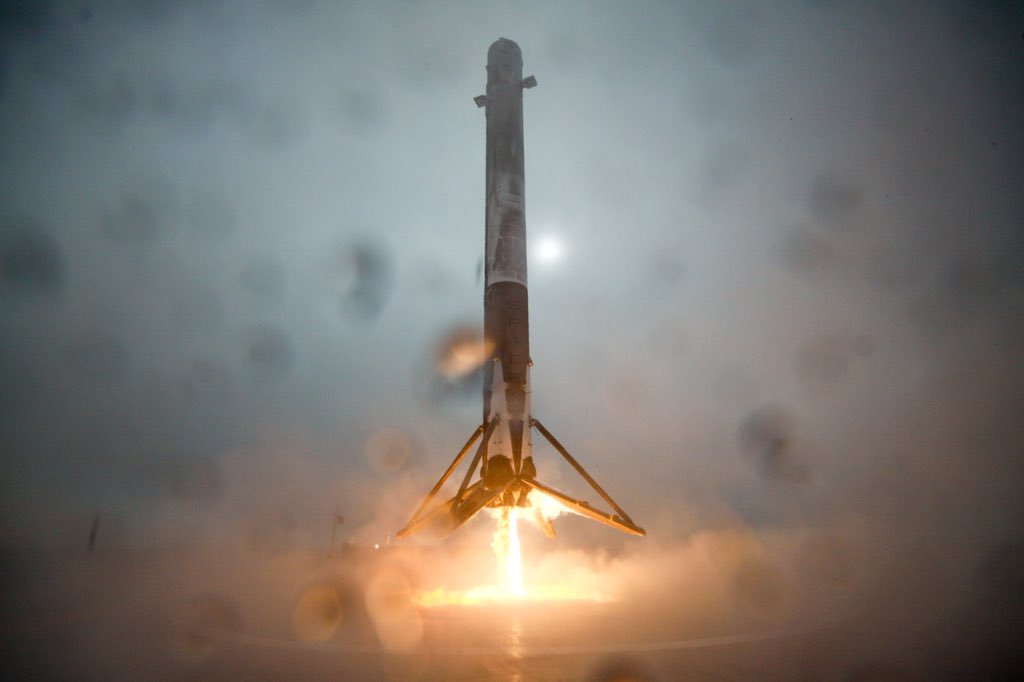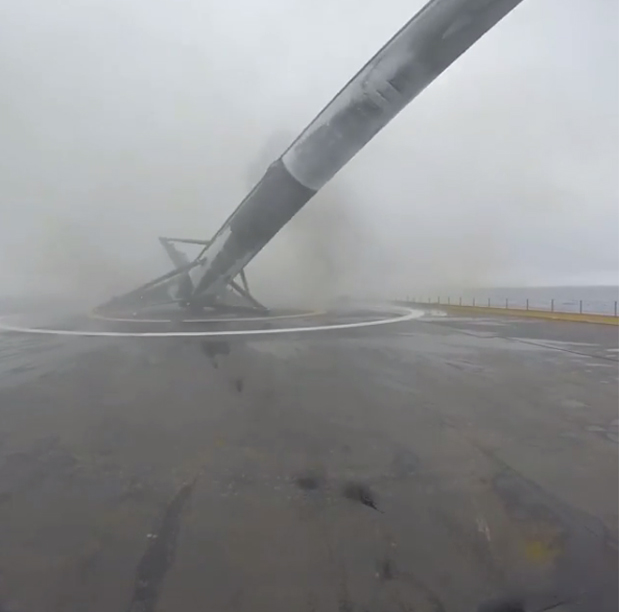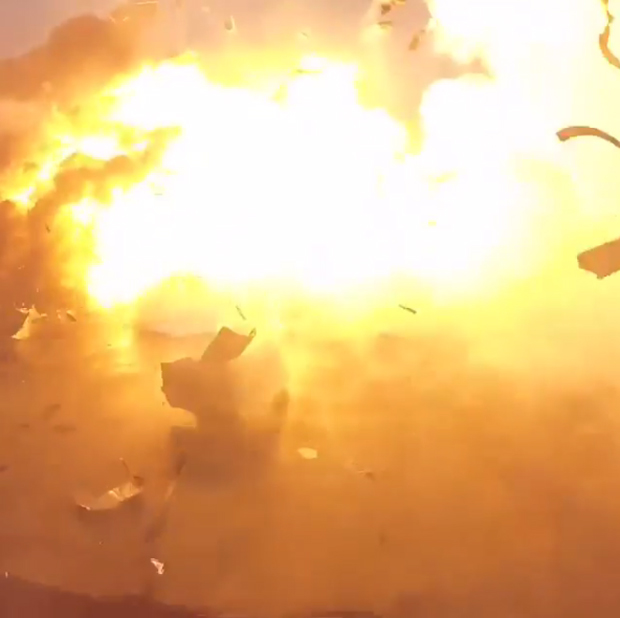Video Shows SpaceX Falcon 9 Rocket Land on Droneship, Then Fall Over and Explode

A video posted late Sunday by billionaire Elon Musk shows just how close his spaceflight company SpaceX came to landing its Falcon 9 rocket on a robotic platform parked in the Pacific Ocean yesterday (Jan. 17).
The short video, which Musk posted on Instagram, shows the Falcon 9 rocket first stage touching down on the drone ship as planned, but then falling over to hit the deck and explode. Musk has said one of the four landing legs on the rocket failed to latch securely, leading to the fall. The rocket landing occured after SpaceX successfully launched the Jason-3 satellite into orbit from Vandenberg Air Force Base in California. The satellite will map Earth's oceans in unprecedented detail for NASA and NOAA.

"Falcon lands on droneship, but the lockout collet doesn't latch on one the four legs, causing it to tip over post landing," Musk wrote on his Instagram post accompanying the video. "Root cause may have been ice buildup due to condensation from heavy fog at liftoff." [See more photos from SpaceX's rocket landing and Jason-3 launch]
Thick, persistent fog blanketed SpaceX's launch site at Vandenberg throughout the countdown to the Jason-3 launch on Sunday. The mission blasted off at 1:42 p.m. EST (10:42 a.m. PST/1842 GMT). SpaceX's droneship "Just Read The Instructions" was stationed about 200 miles (320 kilometers) west of San Diego during the landing attempt.
Last month, SpaceX successfully landed a Falcon 9 rocket on dry land at its Landing Site 1 pad based at the Cape Canaveral Air Force Base in Florida. That rocket landing followed the successful launch of 11 ORBCOMM communications satellites by the same booster. SpaceX also attempted droneship rocket landings several times in 2015 in the Atlantic Ocean, but was unsuccessful.

SpaceX and Elon Musk have been pursuing reusable rocket technology in order to drive down the cost of spaceflight. SpaceX hopes to launch, land and refly the first stage of a Falcon 9 rocket by the end of 2016. The company is aiming to develop a completely reusable launch vehicle as part of its goal of eventually reaching Mars.
Another private spaceflight company, Blue Origin founded by Amazon CEO Jeff Bezos, is also pursuing reusable rocket technology with vertical landings like SpaceX. Last November, the company launched its suborbital New Shepard rocket and landed it on a pad at its West Texas test site.
Get the Space.com Newsletter
Breaking space news, the latest updates on rocket launches, skywatching events and more!
Email Tariq Malik at tmalik@space.com or follow him @tariqjmalik and Google+. Follow us @Spacedotcom, Facebook and Google+. Original article on Space.com.
Join our Space Forums to keep talking space on the latest missions, night sky and more! And if you have a news tip, correction or comment, let us know at: community@space.com.

Tariq is the Editor-in-Chief of Space.com and joined the team in 2001, first as an intern and staff writer, and later as an editor. He covers human spaceflight, exploration and space science, as well as skywatching and entertainment. He became Space.com's Managing Editor in 2009 and Editor-in-Chief in 2019. Before joining Space.com, Tariq was a staff reporter for The Los Angeles Times covering education and city beats in La Habra, Fullerton and Huntington Beach. In October 2022, Tariq received the Harry Kolcum Award for excellence in space reporting from the National Space Club Florida Committee. He is also an Eagle Scout (yes, he has the Space Exploration merit badge) and went to Space Camp four times as a kid and a fifth time as an adult. He has journalism degrees from the University of Southern California and New York University. You can find Tariq at Space.com and as the co-host to the This Week In Space podcast with space historian Rod Pyle on the TWiT network. To see his latest project, you can follow Tariq on Twitter @tariqjmalik.
